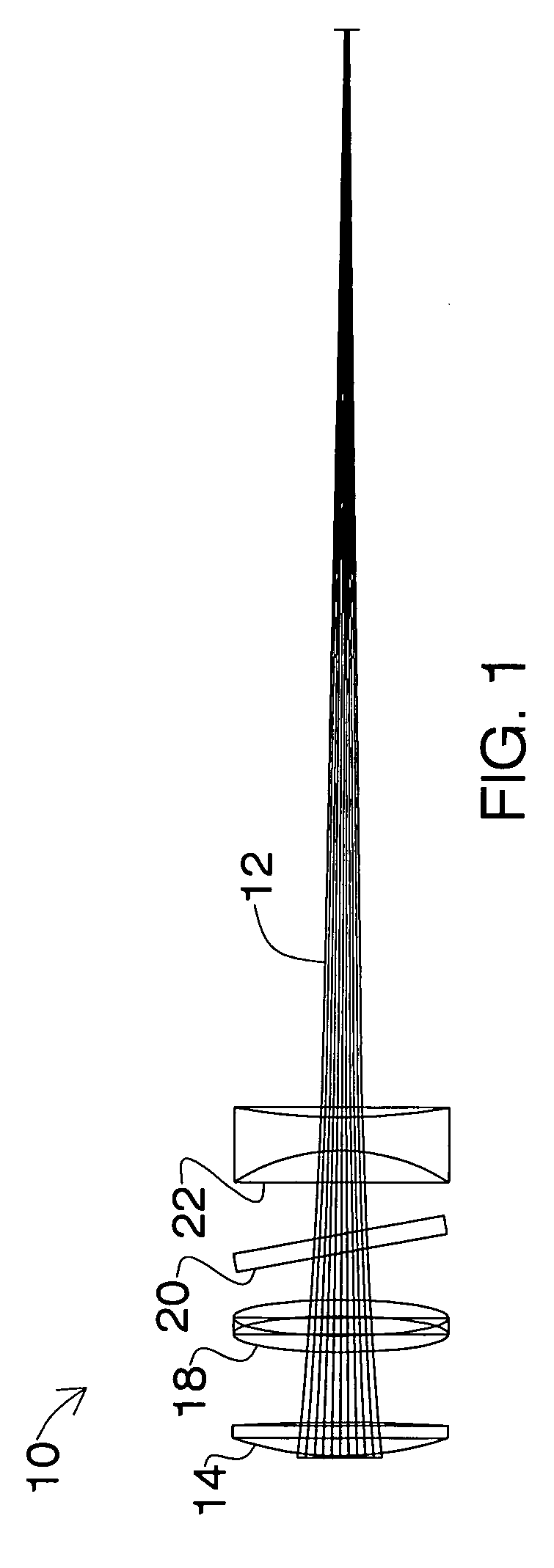Precision laser machining apparatus
a laser machining and precision technology, applied in the direction of optical elements, instruments, manufacturing tools, etc., can solve the problems of less utility in fine machining applications, less precision over a large field, and more optically and mechanically complex approaches, etc., to achieve excellent precision and repeatability.
- Summary
- Abstract
- Description
- Claims
- Application Information
AI Technical Summary
Benefits of technology
Problems solved by technology
Method used
Image
Examples
Embodiment Construction
[0031]Referring now to the FIGURE, there it will be seen that an illustrative embodiment of the invention is denoted as a whole by the reference numeral 10.
[0032]Incoming laser beam 12 passes through simple, positive lens 14 and then through a pair of plane, parallel windows 18, 20. Each of said plane, parallel windows is mounted to a galvanometer motor and is positioned orthogonally to one another.
[0033]Simple, positive lens 14 and negative lens 22 are optimized with a computer optical design program to minimize aberrations (spherical, coma and astigmatism) of the system. There are many commercially available programs to perform the optimization, such as Zemax®, OSLO®, CODE V®, and Beam 3®, to name a few. All have utility in optical design work and perform essentially the same function.
[0034]As is well known, the variables that can be optimized in a computer optical design program are the radius of curvature of each lens, type of glass, glass thickness and spacing between lenses. A...
PUM
| Property | Measurement | Unit |
|---|---|---|
| Length | aaaaa | aaaaa |
| Size | aaaaa | aaaaa |
Abstract
Description
Claims
Application Information
 Login to View More
Login to View More - R&D
- Intellectual Property
- Life Sciences
- Materials
- Tech Scout
- Unparalleled Data Quality
- Higher Quality Content
- 60% Fewer Hallucinations
Browse by: Latest US Patents, China's latest patents, Technical Efficacy Thesaurus, Application Domain, Technology Topic, Popular Technical Reports.
© 2025 PatSnap. All rights reserved.Legal|Privacy policy|Modern Slavery Act Transparency Statement|Sitemap|About US| Contact US: help@patsnap.com


